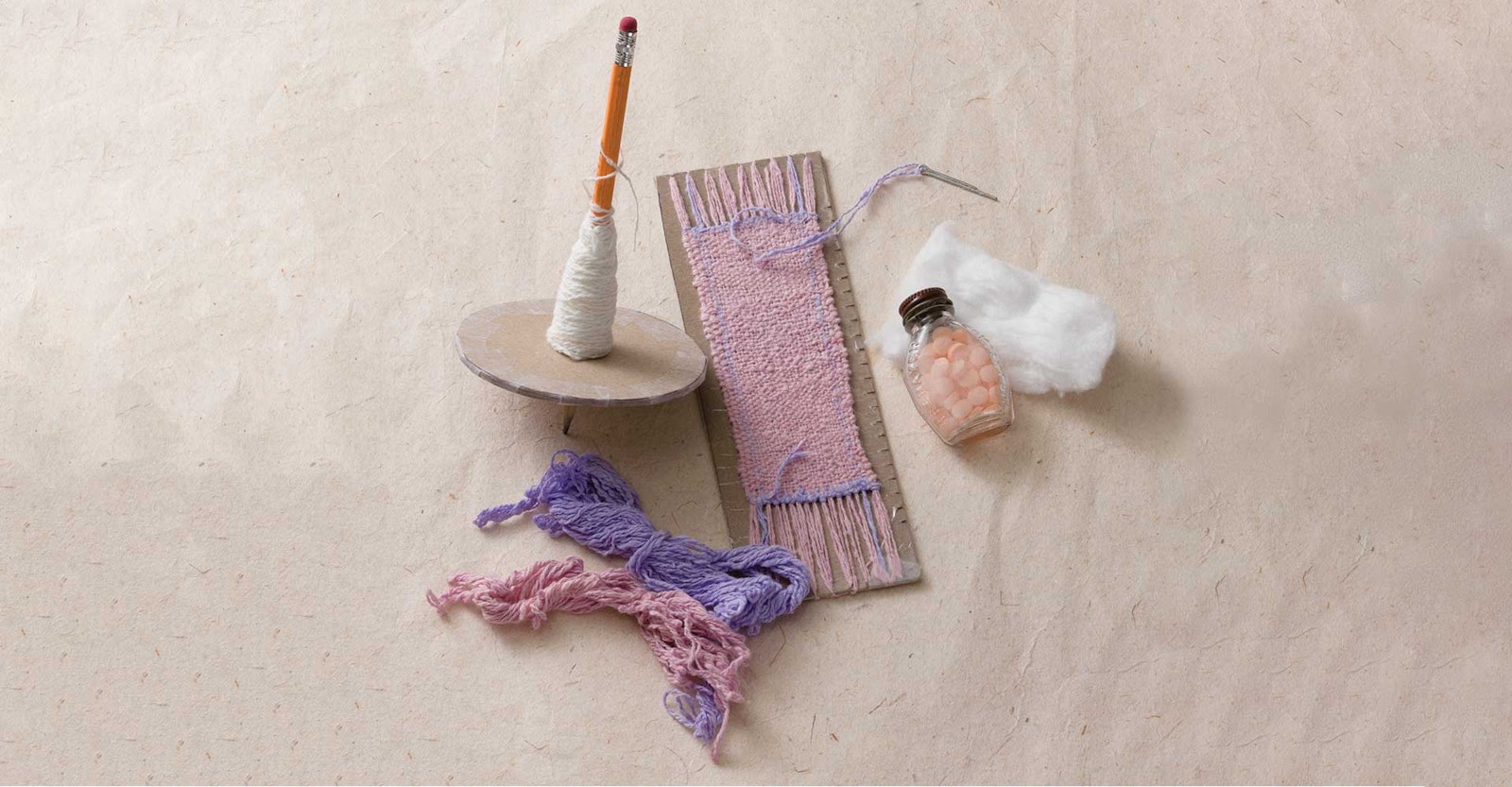August 2004 marked a period when I was without my high-tech fiber equipment for some time, rather traumatic for a fiber junkie. After reading most of the Tarzan books in the library and weaving a few small baskets, time was wearing on me. Daily walks helped some, but during inclement weather, those weren’t possible. Looking around, I noticed the growing pile of cotton stuffing from pill bottles. “Wow,” I thought, “they almost look like the cotton bolls I used to grow in my garden! If I had my spinning wheel, I could convert them into thread.” But alas, no spinning wheel!
“Come on, Dale, you learned to spin on a drop spindle!” But there was no spindle and no wooden dowels and wooden disks to create one. Alas, poor me. “Think, man—there has to be a way!” What about the cardboard backs from the writing tablets? Okay, but I didn’t have a compass to make a circle on the cardboard. But there were pencils. Take a piece of paper, mark off the length I needed to create the circle, then put a pencil through each mark on the ends of the paper and proceed to scribe a circle on the cardboard. That not only scribed the circle but also marked the center. Now cut it out, and we are ready.
But that is awfully lightweight; maybe we should use two circles. That is better—a few tabs of tape around the perimeter and we are ready to go. Press a sharp pencil through the middle, and look—it’s a top, it’s a flying saucer! (Shh, don’t tell anyone. It’s a drop spindle.)
Now to start spinning. I finger-twist enough fiber to create the leader needed to start using the spindle. Soon the spindle is full enough to ply the yarn. This I did by laying the single strand across my bed and off onto the floor. Attaching the two ends to the drop spindle, I made several feet of two-ply fingering-weight yarn.
Of course, it was all white, or maybe a little off-white when my hands weren’t quite clean enough. What could I use to create colors? How about the watercolors from the craft room? Neat. I now had colored string.
Now what? No knitting needles . . . Maybe weaving? But no loom! Well, I still had more cardboard. “Remember,” I thought, “when you made a small loom from cardboard?” Now I could use up some of the yarn that I had spun. What a wonderful way to spend my free time! I even solved the problem of no needle by breaking a paper clip, folding it into a needle shape, and putting scotch tape around it so that it would pass through the threads without snagging.
Dale Jackson owned a florist shop for several years before training as an art educator. Raised on a farm, he didn’t discover spinning until later, when he fell in love with the drop spindle.
This article was published in the Fall 2014 issue of Spin Off.

